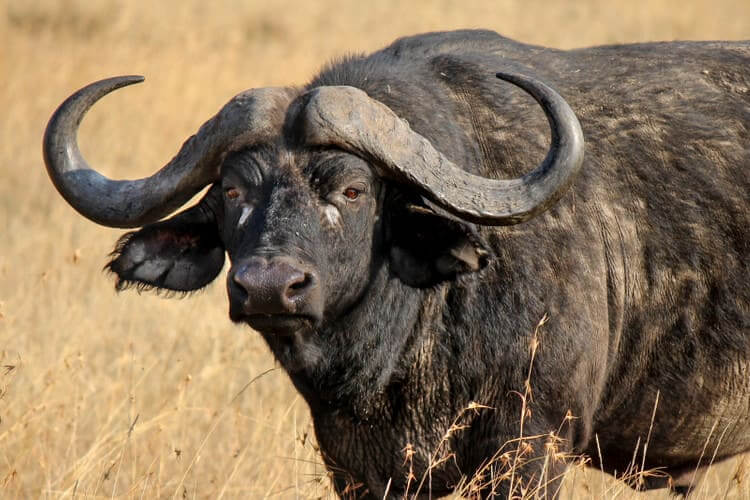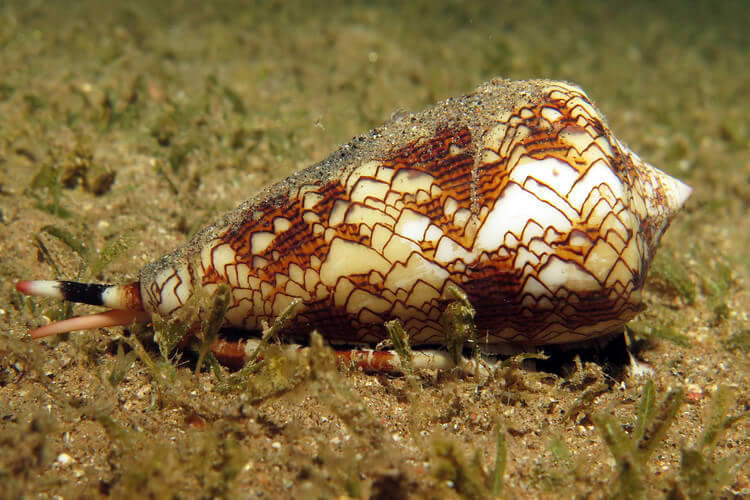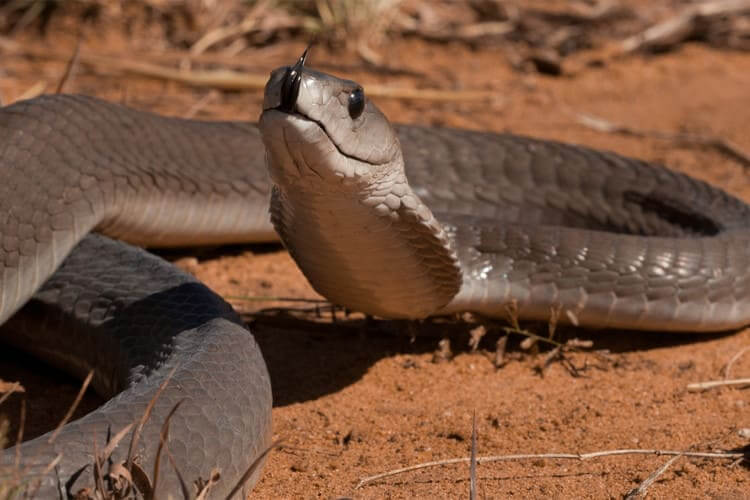The 10 Most Dangerous Animals And Where They Like To Lurk

One of the surprising threats we face as humans comes from the animals that share our planet. You might think of wildlife as harmless or even cute, but some of them can actually be quite dangerous. Even the ones that seem pretty ordinary can cause serious injuries or even fatalities. It’s important to recognize these animals, as many of them don’t look like they’d pose a risk at first glance. So, let’s take a closer look at the ten most dangerous creatures on Earth.
First off, let’s talk about the fact that danger often comes in unexpected forms. For instance, while many of us might be afraid of big predators like lions or sharks, it’s actually smaller creatures that can be just as lethal, if not more so. Think about it: we tend to underestimate animals like jellyfish or certain snakes just because they aren’t big or ferocious-looking.
Now, why should we care about these animals? Understanding their behavior and habitats can help us avoid dangerous encounters. Plus, appreciating their role in the ecosystem can lead to better coexistence. So, let’s dive into this list and discover which creatures we should be a little more cautious around!
#10 Cape Buffalo

Sub-Saharan Africa is home to some fascinating animals that can seem really calm when left undisturbed. Many people who go on safaris get completely captivated by their beauty and majesty. However, it’s important to remember that some of these animals can be quite dangerous.
Take the African buffalo, for instance. These massive creatures can grow up to 6 feet tall and weigh over a ton! They usually prefer to hang out in groups, especially during the late afternoon and early morning when they’re out munching on grass. It’s a pretty sight to see them grazing together in the golden light.
But here’s where it gets interesting: when they feel threatened, their behavior changes drastically. African buffalo can become aggressive very quickly. If they perceive a danger—like a predator or even humans getting too close—they don’t just scatter; they work together. They can form a protective circle around their young or any member of their herd that might be in danger. And they can charge at speeds of up to 35 miles per hour! That’s incredibly fast for such large animals.
Their reputation as the deadliest animal on safaris is no joke. They have caused more fatalities than any other creature in the wild, earning them the nickname “Black Death.” It’s a bit eerie, isn’t it? While they might look peaceful when they’re grazing, they can turn into a formidable force if they feel cornered.
So, while it’s amazing to observe these magnificent animals in their natural habitat, it’s also a reminder to respect their space. Safaris are all about appreciating wildlife, but it’s crucial to keep safety in mind. After all, these creatures deserve our admiration from a safe distance!
#9 Cone Snail

If you’re planning a tropical holiday, keep an eye out for some tiny creatures that you might come across. They might look cute with their pretty brown and white marbled shells, but don’t be fooled! These little snails, known as cone snails, can be very dangerous.
At first glance, they seem harmless, but underneath their charming exterior, they have some hidden tricks. They possess sharp teeth that look like tiny harpoons, and these can inject a powerful poison called conotoxin. What makes this poison particularly scary is that there’s no antivenom available for it at the moment, which means that getting bitten can be extremely serious.
If you do happen to get bitten, it’s crucial to get to an emergency room as quickly as possible. The poison works by blocking signals between nerve cells, which is pretty terrifying. In fact, some people refer to the cone snail as the “cigarette snail” because it’s said you might only have enough time to smoke a cigarette before it could be too late.
This is a good reminder that even in paradise, we need to be aware of our surroundings. While it’s tempting to want to touch everything we see, some creatures are best admired from a distance. So, enjoy the beautiful scenery and the wildlife, but keep your hands to yourself when it comes to these tiny but lethal snails!
#8 Golden Poison Dart Frog

In a small rainforest area near Colombia’s Pacific coast, you can find some truly fascinating but incredibly dangerous frogs. These little guys produce a potent toxin called batrachotoxin, which is one of the most toxic substances known to science. Just to give you an idea of how powerful this toxin is: one single frog has enough poison to kill ten adult males!
But that’s not all. An adult human can be at risk from just two milligrams of this toxin—that’s about the size of the tip of a pin! It’s pretty mind-blowing to think that such a tiny amount can have such a deadly effect.
What’s even scarier is that the glands producing this toxin are located right under the frog’s skin. So, if you happen to touch one, you could end up in the emergency room pretty quickly. It’s a reminder of how nature can be both beautiful and dangerous at the same time.
When you’re exploring areas where these frogs live, it’s essential to admire them from a distance. They might look vibrant and colorful, but they’re a stark reminder that some creatures in the wild can be life-threatening. So, while you’re out enjoying the rainforest, keep your hands to yourself and appreciate the incredible wildlife safely!
#7 Box Jellyfish

Box jellyfish are fascinating yet deadly creatures that usually hang out where the Indian and Pacific oceans meet. Despite not being very smart and only being able to move at a slow speed of about 5 miles per hour, they are often considered the most lethal marine animal on the planet.
What makes these jellyfish so dangerous are their long tentacles, which can reach lengths of up to 10 feet! These tentacles are covered in tiny stinging cells that can deliver a powerful venom. When someone gets stung, the venom can attack the heart, nervous system, and skin all at once, making it extremely serious.
The good news is that there is an antivenom available, but it’s important to note that there are hundreds of different types of box jellyfish, each with its own venom. This means that treatment can be complicated and it’s crucial to seek medical attention right away if stung.
This serves as a reminder that even in the ocean’s beauty, there are hidden dangers. While it’s tempting to swim in the warm waters of tropical regions, it’s wise to stay informed about the wildlife you might encounter. Enjoy the beauty of the ocean, but always be cautious and aware of your surroundings!
#6 Pufferfish

Pufferfish, often found in the tropical oceans of East Asia—like Japan, China, and the Philippines—are some of the most toxic creatures in the sea. Their poison, called tetrodotoxin, is incredibly potent; in fact, it’s about 1,200 times more lethal than cyanide! That’s really alarming when you think about it.
This dangerous toxin isn’t just found in one part of the fish; it’s spread throughout its skin, muscles, liver, and reproductive organs. Because of this, handling and preparing pufferfish requires a lot of expertise. In Japan, for instance, pufferfish, or “fugu,” is considered a delicacy. Only specially trained and licensed chefs are allowed to prepare it, and they undergo extensive training to learn how to safely remove the toxic parts.
Despite these precautions, it’s still risky. Every year, several people end up getting sick or even dying from eating improperly prepared pufferfish. It really highlights how even the most delicious-looking foods can come with hidden dangers!
So, if you ever find yourself in a place where pufferfish is on the menu, make sure it’s being prepared by a qualified chef. While it might be tempting to try this unique dish, remember that safety should always come first! Enjoying local cuisine is great, but knowing what’s on your plate is just as important.
#5 Black Mamba

The Black Mamba, which you can find in the savannas of southern and eastern Africa, is one of the most fascinating and fearsome snakes out there. While it’s not the most venomous snake in the world, its incredible speed and aggressive nature definitely make it a creature to watch out for. This snake can move at speeds of up to 12.5 miles per hour, which is really fast! If it feels threatened, it won’t hesitate to chase after its prey—or even a human. This makes it incredibly hard to escape if you encounter one while on foot.
What’s particularly alarming is the potency of its venom. Just one bite can deliver enough toxins to kill ten people! The Black Mamba doesn’t stop at just one bite, either; it can strike multiple times in quick succession before it decides to move away.
If someone does get bitten, time is of the essence. There’s a critical window of about 20 minutes to get the right antivenin treatment. After that, the chances of survival significantly decrease, making it crucial to seek medical help as soon as possible.
This snake serves as a reminder of the power and unpredictability of nature. While many people find the idea of encountering a Black Mamba thrilling, it’s essential to respect these creatures from a safe distance. Understanding their behavior and how to react can make all the difference. So, if you’re ever in the savannas of Africa, stay alert and keep an eye out for these fast-moving, lethal snakes!
#4 Saltwater Crocodile

Saltwater crocodiles are some of the most formidable and aggressive creatures in the water. In fact, they are responsible for more human fatalities each year than sharks, which is pretty shocking! You can usually find these massive reptiles in the Indo-Pacific waters, but they’re known to migrate as far south as Australia.
What’s truly impressive—and a little terrifying—is their incredible bite strength. It’s comparable to that of the legendary T. rex! Just imagine the power in those jaws. It’s no wonder they’re at the top of the food chain in their habitats.
Even though they’re called “saltwater” crocodiles, these animals can also swim in freshwater. This adaptability makes them even more dangerous because they can thrive in various environments, whether it’s a river or the ocean.
When you think about it, these creatures are perfectly designed for survival. Their size, strength, and versatility in different types of water make them a true force of nature. So, if you’re ever near a body of water where saltwater crocodiles might live, it’s best to keep your distance. They might look like ancient giants, but they’re also incredibly swift and can be very perilous. Always respect their space and appreciate their power from afar!
#3 Tsetse Fly

The tsetse fly is often called the world’s most dangerous fly, and it might surprise you to learn that it’s about the same size as a typical housefly. You can find these flies in Sub-Saharan Africa, and even though they’re small, they pose a serious threat.
Just like mosquitoes, tsetse flies feed on human blood, and in doing so, they can transmit diseases. One of the most notorious is caused by a parasite called Trypanosomes, which leads to a condition known as African Sleeping Sickness. This illness can seriously affect the nervous system and disrupt sleep patterns, making it a major health concern. Unfortunately, there are currently no vaccines or effective treatments for this disease, and if left untreated, it can even be fatal.
So, what can you do to protect yourself from these pesky flies? A good start is to wear clothing in neutral colors, like khaki or beige, as bright colors tend to attract them. It’s also wise to avoid areas with dense shrubs during the daytime when these flies are most active.
This serves as a reminder that even the tiniest creatures can have a big impact on our health. While exploring the beautiful landscapes of Sub-Saharan Africa, it’s essential to stay informed about potential risks like the tsetse fly. By taking some simple precautions, you can enjoy your adventures while staying safe from these tiny but dangerous insects!
#2 Mosquito

Mosquitoes are tiny insects that can be found all over the world, and they hold the unfortunate title of being the second deadliest creature on our list. While they may be small, their impact on human health is enormous. Like the tsetse fly, mosquitoes are notorious for spreading a variety of serious diseases.
Some of the most common diseases they transmit include Chikungunya, encephalitis, elephantiasis, yellow fever, dengue fever, the West Nile virus, and the Zika virus. Collectively, these illnesses are responsible for about 725,000 deaths each year and affect nearly 700 million people worldwide! That’s a staggering number, showing just how significant a threat mosquitoes really are.
What’s even more concerning is that roughly half of the global population is at risk of contracting a mosquito-borne disease. According to the World Health Organization, this makes it essential for everyone to be aware of how to protect themselves, especially in areas where these diseases are common.
So, what can you do to stay safe from mosquitoes? Wearing long sleeves and using insect repellent are great starting points. Installing screens on windows and using mosquito nets while sleeping can also help keep these pesky insects at bay.
It’s important to remember that even the smallest creatures can have a huge impact on our lives. While mosquitoes are a part of nature, being informed and taking precautions can help us enjoy our time outdoors while minimizing our risk of illness. So, next time you’re outside, don’t forget to watch out for these tiny troublemakers!
#1 Humans

When it comes to the most dangerous species on the planet, humans take the top spot. It might seem surprising, especially when you think about the dangerous animals we’ve discussed, but the truth is that we pose the greatest threat to ourselves and to other living beings.
Throughout history, warfare has caused an astonishing number of deaths—estimates range from 150 million to a staggering 1 billion people. That’s a lot of lives lost due to conflict! Even today, while many parts of the world are relatively peaceful, random acts of violence and attacks still occur, leading to tragic losses.
What’s particularly concerning is our capability for destruction. Humans have developed nuclear weapons, which means we have the power to wipe out not just ourselves but all other species on Earth if we choose to use them. This level of potential harm is something that no other animal can match.
Because of this, it’s understandable that many animals might fear us more than we fear them. While we may worry about encountering a lion or a crocodile, those creatures don’t have the same level of destructive power that we do.
This serves as a powerful reminder of our responsibility. As the most dangerous species, we have the ability to create and destroy. It’s important to reflect on how we can use our power for good, promoting peace and protecting the environment rather than causing harm. By recognizing our impact on the world, we can work toward a future where we coexist more harmoniously with all living creatures.

